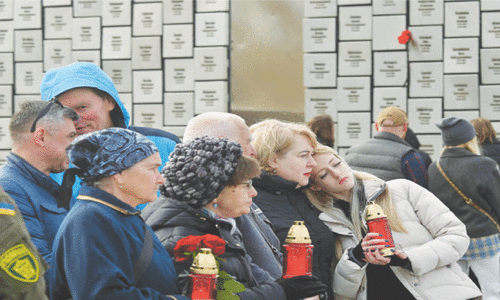In 2008, a deputy district officer (PP&CNG) issued permission for the conversion of a residential plot in North Nazimabad into a commercial plot to be used as a 'CNG filling station'. The owner and resident of the adjoining plot, Mrs Umatullah, objected to the conversion. Her objections were blindly dismissed by the DDO “It was informed to the complainant that the applicant has completed all codal formalities according to the KB&TPR [Karachi Building & Town Planning Regulations] 2002 amended to date for Installation of CNG station.”
Mrs Umatullah filed a petition before the high court of Sindh (CP No. 1583 of 2008). The matter came before Justices Mushir Alam and Aqeel Ahmed Abbassi (the petitioner was ably represented by advocate Mr Badar Alam). Last Monday, April 12, the court accepted the fact that has haunted this city for the last 30 years — that the Karachi Building Control Authority (KBCA) is to simply regulate the construction of buildings and not involve itself in town planning.
The historic landmark judgment, spanning 30 pages, settles this issue and reverts town planning to its correct domain, the City District Government Karachi, stating very clearly “Therefore, Chapter 18 of the KB&TP Regulations 2002 cannot be invoked for sub-division, amalgamation and/or for change of land use therefore use of such power or the procedure, provided therein travels beyond the scope and ambit of Sindh Building Control Ordinance, 1979....”
The right to town planning is where it should be — with the land-owning agency. The decision is the first step in an important battle to restore proper town planning to the city. Needless to say it will be challenged and the matter will head to the Supreme Court where hopefully it will be ensured that Chapter 18 of the KB&TPR 2002 will not be allowed to remain as a bar against town planning in this city.
If the CNG man is to be given any compensation it should be the government agencies concerned who will pay him for losses suffered on account of illegalities they have committed.
The constitution vests the right to legislate in either the National Assembly or the provincial assemblies. The Sindh Building Control Ordinance (SBCO) was imposed on the province in 1979 by the assembly-less government of Gen Ziaul Haq to regulate the construction of buildings. Being a statutory body, the KBCA under the law was not permitted to make regulations that went beyond the scope of the SBCO, and that it did so meant it was taking on the role of the national and provincial assemblies.
After a lapse of four years, a truce was called in the ongoing turf war between various government agencies, and with the intent of earning a quick buck for the KBCA and instead of staying within the limit of the law the Karachi Building Control and Town Planning Regulations 1979 (KB&TPR 1979) were belatedly brought into effect. At that time the area of town planning had been quite distinct from building control and was regulated by two separate laws, the Karachi Development Authority Order 1957 and the Sindh Town Planning Act, 1915. Both laws had similar provisions as to how town planning was to be undertaken — land acquisition coupled with the framing of a comprehensive scheme implemented so as not to adversely affect any person coming within its purview. The process, though time-consuming, was balanced and civilised but did not allow the government to earn 'swiftly'.
Needless to say the chance of earning quick revenue inspired a host of illegal acts, town planning laws were sidestepped and through the KB&TPR 1979 the KBCA gave itself town-planning powers. This should have set alarm bells ringing, but the legal point went unnoticed. The rot set in and rather than addressing the wrongs, the KBCA brought out new regulations in 2002 — the KB&TPR 2002 which contained the same powers.
Strip commercialisation became the norm and the built-up area that could be constructed on a plot was increased on an ad hoc basis by changing a simple ratio disregarding accepted town-planning formulae. The residents of various areas reacted in different manners, the opportunists being shortsighted cashed in. Some objected. Petitions were filed, various amnesty schemes were introduced and vested interests on either side fought in and out of the courts. The main objection to the policies of the KBCA continue — that at the time of allotment of a plot various government agencies make representations on the basis of which a property is purchased, representations which are invariably honoured in the breach.
As we know to our detriment, irregular town planning ensures that no relief can be provided in times of emergencies. For instance, people die in ambulances which cannot get through traffic to hospitals which are now located in areas completely devoid of any vestige of town planning. And, what would the situation be if an earthquake hits this city of 17 million? For a better standard of living and for the safety of all, there must be effective accepted town planning.
There are numerous battles still to be won, such as putting an end to strip commercialisation and the ad hoc increase in the built-up area of plots. The high court of Sindh has taken the lead in restoring some balance to the town-planning issue and the Lahore High Court has also been active. But, the Supreme Court will always be the final authority.











































